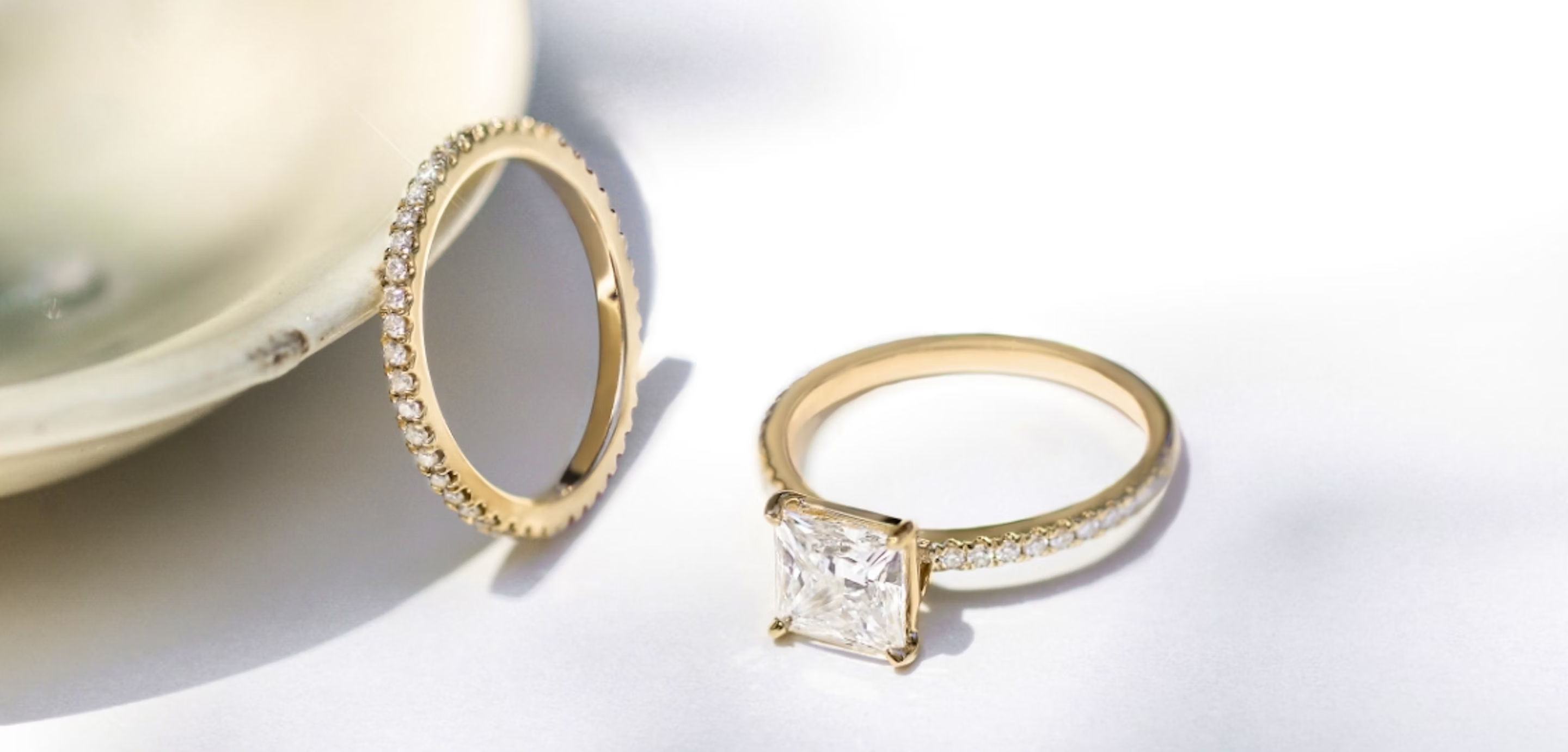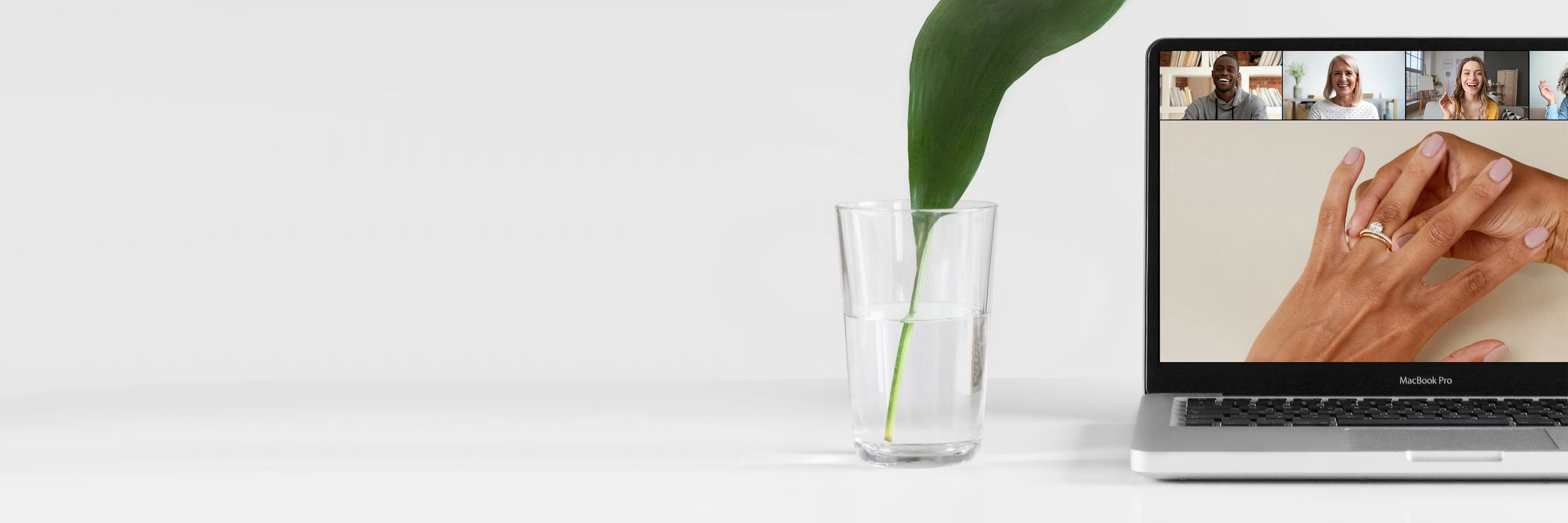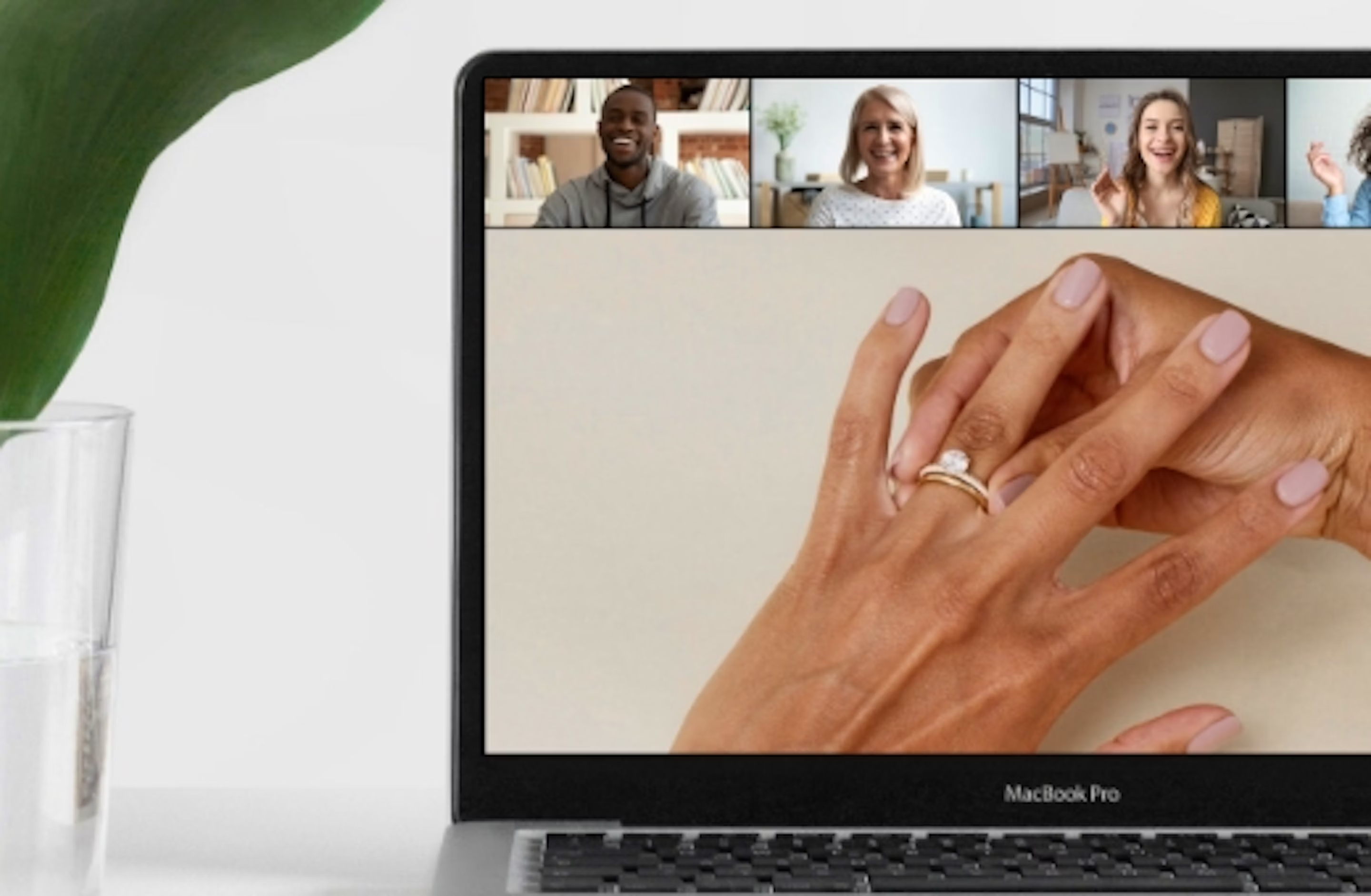

Princess Cut Diamonds: Everything You Need to Know to Buy
Alicia Briggs | July 10, 2023
Princess cut diamonds are one of the newest diamond cuts - commonly chosen for a variety of ring settings and styles. This thoroughly modern shape is beloved for its captivating brilliance and square silhouette. Use this guide to discover everything you need to know about Princess cut diamonds before buying.
Below you’ll find expert advice from GIA Graduate Gemologist and VRAI’s Lead Diamond Expert, Queena Chang. For further personalized guidance on Princess cut diamonds, book a complimentary appointment.
What Is a Princess Cut Diamond?
A Princess cut diamond has a square or rectangular shape, four pointed corners, and flat edges. The Princess cut was created to bring the brilliance of a Round Brilliant cut diamond to a square shape.
The Princess cut is a versatile and popular choice for jewelry and engagement rings, beloved for its modern and sleek appearance.
History of the Princess Cut Diamond
The Princess cut diamond we know and love today was officially invented in 1979 by Israel Itzkowitz. It was created by cutting and shaping a rough diamond into a square or rectangular shape, with the top and bottom parts of the diamond left uncut to form the points.
The Princess cut is one of the newest and most modern diamond shapes available. They are known for their sparkling and fiery display of light, achieved through the faceted surface and the cut’s precise angles.
The origins of the Princess cut date back to the 1400s when diamond cutters began to cut square diamond shapes to optimize the octahedron shape found in rough diamond crystals. This cutting process also preserved more of the rough diamond.
By the 20th century, this diamond cut became known as the French cut and was renowned for its brilliance. Square diamonds embodied the Art Deco era of the 1920s. As diamond cutters began to create more complex cuts, square shape diamonds started to feature a modified brilliant cut.
During the 1960s, variations of these brilliant square cut diamonds became known as Princess cut diamonds. The name was then officially given to Itzkowitz’s cut with Princess cut diamonds reaching peak popularity in the 1980s.
It’s unclear why this diamond cut was called Princess, but it certainly increased its marketing appeal. Princess diamonds quickly became a popular choice, rivaling Round Brilliant cut diamonds for years.
Some of the most famous Princess cut diamonds include the engagement rings of celebrities Meghan Markle, Hillary Duff, Sherri Sheperd, Kate Bosworth, and Emily Ratajkowski.
Today, Princess cut diamonds continue to be one of the most sought-after diamond shapes. With their clean straight lines, beloved brilliance, and modern yet feminine look, it’s easy to see why.
Pros and Cons of the Princess Cut
Before buying a Princess cut diamond, consider the following pros and cons for this contemporary shape.
Pros:
Renowned brilliance. “Princess cuts have a faceting pattern that creates a brilliance that rivals the Round Brilliant cut,” explains Queena Chang, VRAI Lead Diamond Expert.
Sleek square shape. Princess cut diamonds appear simply brilliant in modern settings, but their versatile look suits almost any style and setting.
Cons:
Pointed corners. Due to its square shape, the pointed corners of a Princess cut diamond are prone to chipping or breaking. A 4 prong, Bezel, or Halo setting will protect a Princess diamond’s edges.
Appears smaller. “Due to their deeper pavillions, they do tend to face up smaller than most other shapes,” explains Chang. Opt for a higher carat weight if you prefer a bigger Princess cut diamond.
Be the first to know
Hear about our latest designs and upcoming events.
Evaluating the Princess Cut: The Diamond 4Cs
The diamond 4Cs (cut, color, clarity, and carat weight), can help you evaluate a Princess cut diamond before buying.
“I recommend focusing on carat weight and color for the Princess cut, as both will play into showcasing the shape and the intricate faceting pattern of the cut,” advises Chang.
Cut
Diamond cut greatly affects the overall appearance and brilliance of a Princess cut diamond. Most Princess cut diamonds have 57 facets. A high-quality Princess cut will have precise angles and faceting that allow it to reflect and refract light effectively, resulting in a bright appearance.
All VRAI Created Princess cut diamonds have an Excellent cut with perfect proportions.
Color
Princess cut diamonds are great for color grades of F-H color diamonds. “Princess cuts are very brilliant which helps to conceal color. These color grades will compliment any metal color you choose to set the diamond into,” explains Chang.
Clarity
Of the 4Cs, clarity grade is the least important for a Princess cut diamond. “You can truly aim for a lower clarity on the Princess cut, as it is very forgiving and hard to see,” Chang advises. “I would recommend VS+ clarity or even SI1 clarity.”
Carat
Carat weight can significantly impact the overall appearance and cost of a Princess cut diamond. For example, A 1 carat Princess cut diamond weighs approximately 0.2 grams and is considered a medium-sized diamond. But a 2 carat Princess cut diamond weighs approximately 0.4 grams and is considered a larger diamond.
Higher carat weight Princess cut diamonds often appear more impressive and eye-catching. However, diamond carat price greatly influences the total cost of a diamond. Consider both size and price when selecting carat weight.
What Are the Best Settings for Princess Cut Diamonds?
The best engagement ring setting for a Princess cut diamond will securely protect and cover its four pointed corners. Solitaire prong, Halo, or Bezel settings will shield a Princess cut diamond’s corners while highlighting its brilliance.
Princess cut diamond engagement rings are a popular choice for couples looking for a modern and sleek design. “I love Solitaire engagement rings for the Princess cut, or even settings that would rotate the diamond at a 45-degree angle, like The Curator. This gives it a truly unique look,” says Chang.
A Cathedral, Three Stone, or white gold setting will also highlight this shape’s modern-yet-timeless appearance.
Princess Cut FAQs: Ask a Diamond Expert
Below, Lead Diamond Expert Queena Chang answers commonly asked questions about Princess cut diamonds.
What Is the Best Depth for a Princess Cut Diamond?
“The preferred depth percentage of a Princess cut diamond tends to be between 64-75%. Most commonly tend to fall at 70%,” Chang explains.Do Princess Cut Diamonds Appear Larger Than Other Diamond Shapes?
Princess cut diamonds have a deep pavilion which means they can look smaller than they are face up. Princess cuts tend to appear smaller than elongated diamond shapes and Round Brilliant cut diamonds of the same carat weight.Do Princess Cut Diamonds Chip More?
The sharp pointed edges of a Princess cut diamond can be prone to chipping if they aren’t securely set. If you’re setting your Princess diamond in jewelry, select a setting that protects the corners such as a prong or Bezel setting.
What Is the Perfect Size For a Princess Cut Diamond?
There is no perfect size for a Princess cut diamond as the best size depends on personal preference. Princess cut diamonds with a higher carat weight are preferred by people who love larger diamonds, maximum brilliance, or have a larger budget.People who prefer smaller diamonds or subtle jewelry, work with their hands, or have a smaller budget tend to choose a lower carat weight.
Do Princess Cut Diamonds Cost More Than Other Diamond Shapes?
Princess cut diamonds do not cost more than most other diamond shapes. They often cost less than a Round Brilliant cut diamond of the same quality and carat weight. This makes Princess cut diamonds a more affordable brilliant cut diamond.
What is the Cushion Princess Cut?
A Cushion Princess cut diamond combines the soft, square outline of a Cushion diamond with the complex brilliant faceting pattern seen in Princess cut diamonds.

